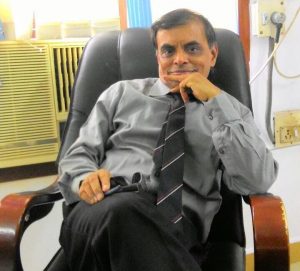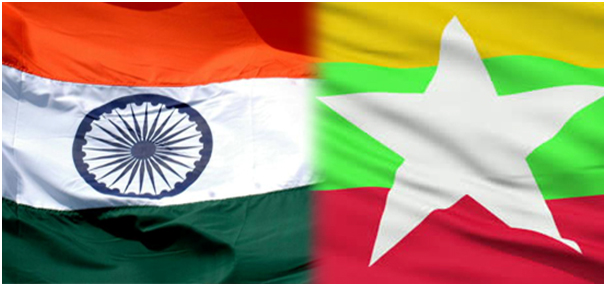India and the World : Burma to Myanmar – names change, relations don’t.

Baskaran Krishnamurthy
Part 1
One of India’s greatest warriors Subhas Chandra Bose thundered in July 1944 on a foreign soil- “It is blood alone that can pay the price of freedom. Give me blood and I shall give you freedom”. It was Burma then.
In the year 1989, the military government changed the name of the country from Burma to Myanmar. This has been widely accepted now and excepting America and England, all nations and the world bodies call it Myanmar.
The word ‘Burma’ was freely used by the colonial British to denote the strongest ethnic community – the Burmese. But there were at least 7 other ethnic groups – not so large in numbers. The military establishment in 1989 decided to shed the name Burma and adopt Myanmar which is inclusive of all the ethnicities of the land. In the original Burmese scripts and the official documents of the country, it is neither Burma nor Myanmar; but, ‘Myama’ or Myanmar’ that is in use.
Burma remains a ‘close to heart’ land to many in India though it is officially Myanmar today. In many parts of India, the Burmese settlements have given way to apartments with the later generations of Burmese immigrants becoming Indian nationals at par with any other Indian.
They were not strictly Burmese but original inhabitants of India but settled in Burma for long. During the World War II, during January – July 1942, fearing a massive drive against them of a total annihilation, people of Indian origin, managed to move over to India against all odds. The repatriation continued almost till 1960s though it was of insignificant numbers in 1950s.
India extended a ‘more than cordial’ hand to these helpless migrants and gave them all hope to live in dignity. Separate settlements were allotted to accommodate thousands of ‘Burmese’ families and the sons and daughters from Burma were given special privilege in recruitment to government service. The care and warmth that India accorded to the Burmese ensured that the next generation did not carry any ill will against anyone.
The centuries old relations between India and Burma had never seen any serious challenge except during the later part of 20th century particularly in early 1990s when the military rule in Burma suppressed democratic functioning there and openly encouraged drug trafficking and other illegal activities that spilled over to Indian territories.
The military establishment in the name of State Law and Order Restoration Council had taken over the reins of the government in Burma; indulged in human rights violations; declared the results in 1990 void and had taken the leader of the people Aung San Suu Kyi to house arrest. She was to spend two decades in confinement till she was released in November 2010.
India for many centuries had a close cultural relationship with Burma and Buddhism played a major role in firmly establishing friendly ties with each other. Burma was indeed a part of British India for a short period and in late 1930s was separated. It was then occupied by Japan and it was during this time that Subas Chandra Bose delivered the famous ‘give me blood’ speech.
Burma gained independence from the British a year after India and from then on the relations between India and Burma grew stronger. Yangon (previously Rangoon) the Capital of Myanmar is like Lahore of Pakistan that houses many cultural and religious sites attracting huge number of visitors from across the border.
As the Prime Minister of India during his visit to Myanmar in September 2018 said – “North East region of India is the gate way of North East Asia and its doors open with Myanmar. Buddhism, Business, Bollywood, Bharat natyam and Burma teak are the 5 ‘B’s that unite India and Myanmar.” He included a 6th ‘B’ too ‘Bharosa’ meaning ‘Faith’.
Myanmar houses many an Indian colonies and a place called ‘Ziyawadi’ – is said to be mini – India where Hindi is taught in schools and most of the residents have their roots in Bihar, India.
India ‘s north eastern states, – Arunachal Pradesh, Manipur, Mizoram and Nagaland – share a land border of over 1600 kms with Myanmar. They also share common cultural interests from ancient times and the people of north eastern states find many of their customs and rituals rooted in Myanmar as the people of Myanmar find many commonalities with the Indian states too.
During the period in the second half of 20th century starting from 1962, the military junta crushed the democratic functioning in the country and indulged in all forms of human rights violations. In 1980s, India had to face mass influx of refugees from Myanmar causing a major economic, social challenge.
India supported the movements of democracy in Myanmar very much against the wishes of the ruling military and this move, to a large extent, strained the relations between the two. This was however a short lived one as the military rule had to give in to the pressures from within and outside too. With the reinstatement of a democratically elected government, the bitterness between the two countries instantly vanished paving the way for days of better cooperation.
Today, India is the second largest exporter of Myanmar and in turn India imports a heavy amount of pulses from Myanmar. India has invested in a number of projects of infrastructure development that would enhance the economic conditions of the people of Myanmar.
India – Myanmar-Thailand Trilateral Highway would be of great advantage to all the three countries. Many other massive trade and economic plans are under way and the inter-governmental discussions take place regularly to boost the current level of business cooperation and to take it to new frontiers as well.
All is not so well between India and Myanmar. The growing presence of China in the region poses a big problem too. The Silk Road of China and its ever increasing dominance in Myanmar do not augur well for India.
Moreover, the issue of Rohingya Muslims still remains a thorn in bilateral issues. Keeping in view the age old relations with Myanmar, India did not vote against Myanmar in the Bali declaration on the issue of Rohingyas. Though international community does not endorse India’s stand, it is so significant from India’s point of view since more than being a mere cultural and economic ties, it is a strategic relationship that is most important for the security of the two nations and also for the entire South East Asia.
Yes. The ‘China factor’ in fact, helps in bringing the nations of the region together and facilitates a smoother relationship. India – Myanmar relations is the classic example!
To be continued in Part 2……
Author – Baskaran Krishnamurthy, Writer, Columnist & Income Tax officer




























 WhatsApp us
WhatsApp us
Pingback: 7lab pharma steroid
Pingback: How To Use Wealthy Affiliate 2020
Pingback: Best place to buy prescription medications safely online overnight
Pingback: Replica womens rolex datejust
Pingback: DevOps consulting services
Pingback: Digital business transformation
Pingback: Toshiba 37CV510U manuals
Pingback: cheap wigs
Pingback: get more
Pingback: sex tourism in cuba
Pingback: Replica rolex submariner bands
Pingback: rolex replica
Pingback: euroclub
Pingback: 배트맨토토
Pingback: benelli nova tactical
Pingback: Attain Increased Source Of Information With Creative Writing Online
Pingback: กล่องอาหาร
Pingback: real dump pin
Pingback: sprawdzisz.pl
Pingback: do.bpatekphilippe.com
Pingback: verify dumps shop
Pingback: contactos mujeres
Pingback: nova88
Pingback: buy magic mushrooms Kansas USA
Pingback: Buy Steroids